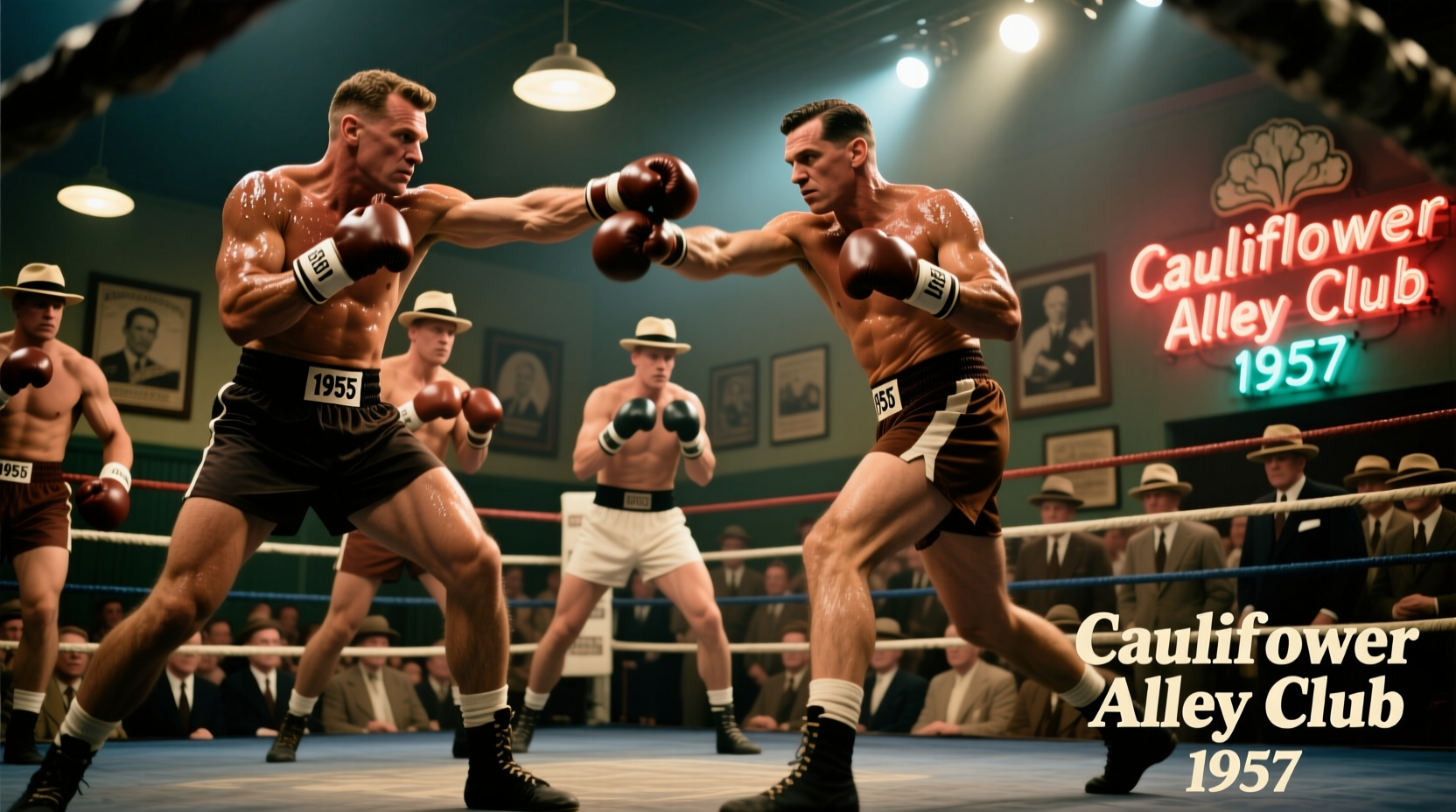If you've ever wondered what exactly is Cauliflower Alley and why this term appears in sports discussions, you're not alone. This comprehensive guide reveals the true meaning behind this misunderstood term, its historical significance in combat sports, and how this vital organization continues to support athletes who shaped boxing and wrestling history.
Understanding the Real Meaning of Cauliflower Alley
Despite what the name suggests, there is no actual alley called Cauliflower Alley. The term refers specifically to the Cauliflower Alley Club (CAC), a charitable organization named after the distinctive 'cauliflower ear' condition common among fighters due to repeated trauma to the ears. This condition, medically known as auricular hematoma, creates a swollen, lumpy appearance that resembles the vegetable—hence the nickname.
Founded in 1998 by Mike Mazzeo, Joe Tarsia, and other concerned members of the boxing community, the organization emerged from a critical need. Many legendary fighters who entertained millions found themselves struggling with medical bills, housing insecurity, and basic living expenses after their careers ended. The CAC was created to address this gap in support for those who dedicated their lives to combat sports.

Historical Evolution of the Organization
The story of the Cauliflower Alley Club follows a clear progression from informal gatherings to an established nonprofit:
- 1990s: Informal meetings among retired fighters in Southern California
- 1998: Official founding of the nonprofit organization with formal structure
- Early 2000s: Establishment of annual reunion event as primary fundraiser
- 2010: Creation of dedicated assistance programs for medical and housing needs
- Present: Over $1.2 million distributed in direct assistance to fighters and families
How the Organization Operates Today
The Cauliflower Alley Club functions through several key mechanisms that directly address the needs of retired combat sports professionals:
Annual Reunion Event
Held each spring in Southern California, this signature event brings together current and former fighters, trainers, managers, and fans. The reunion serves multiple purposes:
- Primary fundraising mechanism through ticket sales and donations
- Community building opportunity for isolated retired athletes
- Platform for announcing assistance recipients
- Preservation of boxing and wrestling history through shared stories
Assistance Programs
The organization manages several targeted assistance programs:
- Medical Assistance: Covers costs for surgeries, medications, and treatments
- Housing Support: Prevents evictions and covers essential home modifications
- Living Expenses: Provides temporary support for food, utilities, and transportation
- Emergency Grants: Rapid response funding for urgent situations
| Common Misconception | Actual Reality |
|---|---|
| Cauliflower Alley is a physical location or street | No physical alley exists; it's the name of an organization |
| The organization only helps boxers | Supports boxers, wrestlers, and their immediate family members |
| Only famous fighters receive help | Assistance prioritized by need, not fame or career achievements |
| It's primarily a social club | Social aspects support the primary mission of financial assistance |
Context and Limitations of Support
While the Cauliflower Alley Club provides essential services, understanding its scope and limitations helps set realistic expectations:
The organization focuses specifically on post-career challenges faced by combat sports professionals. Unlike sports unions or pension programs, the CAC operates as a charity dependent on donations rather than mandatory contributions. This creates both strengths and limitations in their ability to help.
According to their publicly available reports, the organization has assisted over 300 individuals since inception, with average assistance packages ranging from $1,500 to $5,000 depending on the situation. The Cauliflower Alley Club official website details their application process and current needs.
It's important to note that the organization cannot solve systemic issues in fighter compensation and healthcare. As documented by the American College of Sports Medicine, combat sports athletes face unique long-term health challenges that require broader industry solutions beyond what any single charity can provide.
How You Can Support or Benefit from the Organization
Whether you're a fan wanting to help or someone who might need assistance, here's how to engage with the Cauliflower Alley Club:
For Those Seeking Assistance
Eligibility requires:
- Documented career in professional boxing or wrestling
- Verifiable financial need
- Completion of official application form
For Supporters and Donors
Meaningful ways to contribute include:
- Attending the annual reunion event
- Making tax-deductible donations through their official channels
- Volunteering time for event organization or outreach
- Spreading awareness about their mission
Many supporters discover that learning how to help retired boxers through Cauliflower Alley creates meaningful connections to sports history while making a tangible difference in fighters' lives.
Why This Organization Matters in Sports History
The Cauliflower Alley Club represents more than just financial assistance—it preserves the legacy of combat sports. By supporting fighters who might otherwise be forgotten, the organization ensures that the stories, techniques, and contributions of these athletes continue to inform current and future generations.
When you understand the true purpose of Cauliflower Alley organization, you recognize it as a vital bridge between the golden eras of boxing and wrestling and the present day. The club's work helps maintain the human connections that statistics and records alone cannot capture.











 浙公网安备
33010002000092号
浙公网安备
33010002000092号 浙B2-20120091-4
浙B2-20120091-4